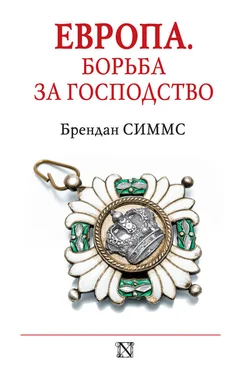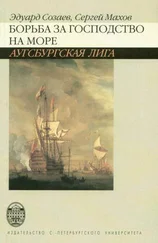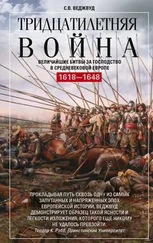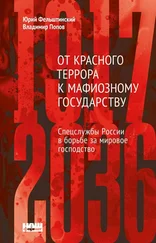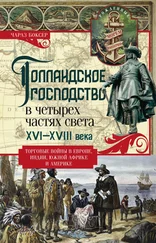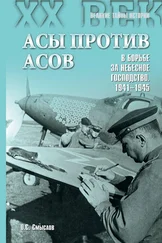Barbara Rearden Farnham, Roosevelt and the Munich Crisis. A study of decision-making (Princeton, 1997), p. 159.
Nation, Black earth, red star, p. 98.
David Reynolds, From world war to Cold War. Churchill, Roosevelt and the international history of the 1940s (Oxford, 2006), pp. 18–19.
Jochen Thies, Archtekt der Weltherrschaft. Die ‘Endziele’ Hitlers (Dusseldorf, 1976).
Rolf-Dieter Müller, Der Feind steht im Osten. Hitlers geheime Pläne für einen Krieg gegen die Sowjetunion im Jahr 1939 (Berlin, 2001), pp. 251–61.
Albert L. Weeks, Stalin’s other war. Soviet grand strategy, 1939–1941 (Lanham, Boulder, etc., 2002), pp. 172–3.
Имеется в виду секретный дополнительный протокол к договору о ненападении между Германией и СССР. Примеч. ред.
A. J. Prazmovska, ‘War over Danzig? The dilemma of Anglo-Polish relations in the months preceding the outbreak of the Second World War’, Historical Journal, 26 (1983), pp. 177–83.
Jonathan Haslam, ‘Soviet war aims’, in Ann Lane and Howard Temperley (eds.), The rise and fall of the Grand Alliance, 1941–45 (Basingstoke and New York, 1995), pp. 24–5.
Talbot C. Imlay, Facing the Second World War. Strategy, politics and economics in Britain and France, 1938–1940 (Oxford, 2003).
Jan T. Gross, Revolution from abroad. The Soviet conquest of Poland’s western Ukraine and western Belorussia (Princeton, 1988).
Главное управление имперской безопасности ( нем .), РСХА. Примеч. ред.
David Reynolds, ‘1940: fulcrum of the twentieth century?’, International Affairs, 66 (1990), pp. 325–50.
Robert O. Paxton, Vichy France. Old guard and new order, 1940–1944 (London, 1970), pp. 51–62.
Данное утверждение также на совести автора . Примеч. ред.
Davide Rodogno, Fascism’s European empire. Italian occupation during the Second World War (Cambridge, 2006).
Richard Bosworth, ‘War, totalitarianism and “deep belief” in Fascist Italy, 1935–43’, European History Quarterly, 34, 4 (2004), pp. 475–505, especially pp. 492–93.
Stanley G. Payne, Spain, Germany and World War II (New Haven and London, 2008), pp. 87–113.
Avi Shlaim, ‘Prelude to downfall: the British offer of union to France, June 1940’, Journal of Contemporary History, 9, 3 (1974), pp. 27–63.
Anthony J. Cumming, ‘Did the Navy win the Battle of Britain? The warship as the ultimate guarantor of Britain’s freedom in 1940’, Historical Research, 83 (2010), pp. 165–88.
David Edgerton, Britain’s war machine. Weapons, resources and experts in the Second World War (London, 2011), especially pp. 47–8 and 124–5.
J. Lee Ready, Forgotten allies. The military contribution of the colonies, exiled governments and lesser powers to the Allied victory in World War II. Vol. I: The European theatre (Jefferson and London, 1985).
Andrew Stewart, Empire lost. Britain, the dominions and the Second World War (London, 2008), p. 106.
Африканский корпус ( нем .) . Примеч. ред.
Norman J. W. Goda, Hitler, northwest Africa, and the path toward America (College Station, Texas, 1998).
Harper, American visions of Europe, p. 59.
Reynolds, From world war to Cold War, p. 19.
Букв. «целевые группы» ( нем .), военизированные «эскадроны смерти» . Примеч. ред.
Nation, Black earth, red star, pp. 122–4.
Steven Merritt Miner, Stalin’s holy war. Religion, nationalism, and alliance politics, 1941–1945 (Chapel Hill and London, 2003).
Dan Plesch, America, Hitler and the UN. How the Allies won World War II and forged a peace (London, 2011), especially pp. 31–57 (quotation p. 34).
Mark Harrison, ‘Resource mobilisation for World War II: the USA, UK, USSR and Germany, 1938–1945’, Economic History Review, 41, 2 (1988), pp. 171–92.
Генеральный план «Ост» ( нем .) . Примеч. ред.
Snyder, Bloodlands, p. 161.
Nicole Kramer, Volksgenossinnen an der Heimatfront. Mobilisierung. Verhalten. Erinnerung (Göttingen, 2011), pp. 164–5.
Sheila Rowbotham, A century of women. The history of women in Britain and the United States (London, 1997), p. 247.
James T. Sparrow, Warfare state. World War II Americans and the age of big government (Oxford and New York, 2011).
Thomas Bruscino, A nation forged in war. How World War II taught Americans how to get along (Knoxville, 2010).
Ian Kershaw, Fateful decisions. Ten decisions that changed the world, 1940–1941 (London, 2007).
Christopher Browning, The origins of the Final Solution. The evolution of Nazi Jewish policy, 1939–1942 (London, 2005). Я в основном следую работе: Jersak, ‘A matter of foreign policy’, pp. 369–89.
Hildebrand, Das vergangene Reich, p. 752
Michael R. Beschloss, The conquerors. Roosevelt, Truman and the destruction of Hitler’s Germany (New York, 2002), p. 21.
Ilse Dorothee Pautsch, Die territoriale Deutschlandplanung des amerikanischen Aussenministeriums, 1941–1943 (Frankfurt am Main, 1990), p. 122. Страхи американцев перед Германией: James McAllister, No exit. America and the German problem, 1943–1954 (Ithaca and London, 2002), pp. 1–42.
Klaus Larres, ‘Churchill: awed war leader or charismatic visionary?’, in Brendan Simms and Karina Urbach (eds.), Die Rückkehr der ‘Grossen Männer’. Staatsmänner im Krieg – ein deutsch-britischer Vergleich 1740–1945 (Berlin and New York, 2010), p. 154.
Lothar Kettenacker, Krieg zur Friedenssicherung. Die Deutsch-landplanung der britischen Regierung während des Zweiten Weltkrieges (Göttingen and Zurich, 1989), pp. 534 and 537–42.
Larres, ‘Churchill’, p. 141.
Patrick J. Hearden, ‘Early American views regarding European unification’, Cambridge Review of International Affairs, 19 (2006), pp. 67–78, especially pp. 74–5.
Читать дальше
Конец ознакомительного отрывка
Купить книгу
